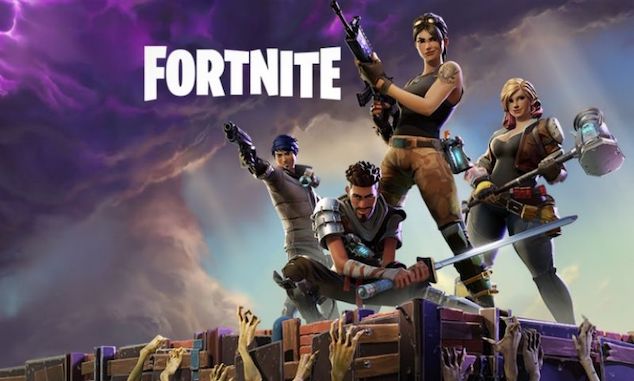
How free-to-play games focus on engaging dedicated players in accelerating their game progress while allowing vendors to rake in cash.
To the casual observer, the fact that free-to-play online games are among the most profitable products in the video game sector seems counter-intuitive. How can a game such as League of Legends or Fortnite, which costs nothing to play, actually make more money than expensive console games such as the latest Call of Duty blockbuster? Nevertheless, for the last 10 years, free-to-play games have consistently generated more revenue than premium games in the top 100 of major app stores. So, how exactly do free games make money, and how has free-to-play, or more specifically, freemium, become the dominant model in today’s video game environment?
Not just advertising
The obvious answer to the question of how free media makes money is advertising. After all, this is a tried-and-tested model. From newspapers to TV, many traditional media forms are available free of charge (or at production cost) to consumers, but are made profitable by the presence of adverts interspersed among the content. Some might even say that the content is there to sell the ads, and that exposing potential buyers to product marketing is the main function of freesheets and commercial television.
Surely, then, the same principle applies to online games? Up to a point, yes. Advertising does provide a certain amount of revenue for these games, though the way that ad space is sold to companies is slightly different. Rather than paying one sizable fee to have their advert featured, online advertisers generally pay a recurring small amount every time someone clicks on their ad or, in some cases, every time someone sees it. This difference gives a clue to the main financial driver of freemium games.
Micro-transactions
A game that is free to play, and gives you a fully functional experience entirely gratis, may also include many opportunities for small in-game purchases that will enhance the playing experience in some way. For what may seem like a trivial amount of money, players will be able to buy unique items such as maps, weapons or armour. They might also be able to unlock extra levels or sections of the game that would either remain inaccessible without paying, or would only be unlocked after much more time and effort.
These small purchases are known as micro-transactions and are the main way that free-to-play games generate huge profits. While once it was accepted that less than 6% of players spent any money on these transactions, it’s now apparent that 90% of MMO players buy items in-game. With so many players, even if only a small percentage spends money, it ensures that successful freemium games are massively profitable.
Ongoing spending
There are also those online games that give you a chance to win money. Casino games are free to play in that you don’t have to pay anything in order to access the games, and indeed sites often offer demo versions of popular games where you don’t play for real money at all. However, of course, if you’re going to gamble on online slots or table games such as roulette and blackjack, you’ll have to wager your own money first. There are many different casino payment methods for you to deposit money in your account, and, of course, you can also withdraw your winnings if you get lucky.
In some ways, freemium video games are similar to casino games in that they rely on players continuously spending small amounts rather than paying one large amount to own the game upfront. Gamers in developing countries and Asia were among the first to accept micro-transactions as a payment method, but subscription models are also very popular in the whole online sphere, where customers pay an annual or monthly fee in order to continue to access a product. This may also be scalable, where a basic version is either free or available relatively cheaply, but you can pay more for extra features as and when you need/want them.
Ad-free experience
If a game is very popular, it’s relatively easy to sell advertising space – but what about free-to-play games that don’t have such a big following? In some cases, these games can make money by having the adverts disappear. In other words, a version of the game with adverts is free to play, but you can also pay to get an ad-free version. For this model to be profitable, it doesn’t matter what the ads are – advertising space could be sold cheaply, or the ads made up on promotion for in-house products. They are there solely to be annoying interruptions that players will happily pay to be rid of.
Skin in the game
‘Skins’ are cosmetic items that change the appearance of your character or avatar in the game, and are one of the most popular forms of micro-transaction. Importantly, they don’t improve your chances of winning or completing the game, so the sale of skins can’t be seen as sneaky ‘pay to win’ hidden charges. Their purchase is entirely optional, but they are fun.

In some cases, they can also be used outside the game as a kind of virtual currency for betting on video game battles that are streamed on sites such as Twitch. ‘Skin gambling’ isn’t endorsed or encouraged by the game developers, but it does increase the popularity of these virtual items.
Economics of scale
Micro-transactions are profitable because of the economics of scale. Even if only 10% of players spent money in a game, the fact that the game is free to play may mean that it has millions of players, so 10% is still a significant amount. Of that 10%, some may only spend occasionally, but a minority will snap up every micro-transaction they come across. They enjoy the game more because of these opportunities, and in some cases may provide the lion’s share of the revenue.
Each micro-transaction is also nearly 100% profit. With design costs included in the overall game development budget, the virtual product sold has no production or material costs and no storage or distribution overheads. The player may get a more satisfying game experience, but for the producer, the sale is literally getting them something for nothing.
Looked at this way, it’s little wonder that free-to-play games are fast on their way to becoming the dominant business model in video gaming. Today, people expect to be able to stream entertainment for free on demand. However, once they’re involved in the experience, many don’t mind paying small amounts. Eventually, those small amounts add up to serious profits for the games companies.






